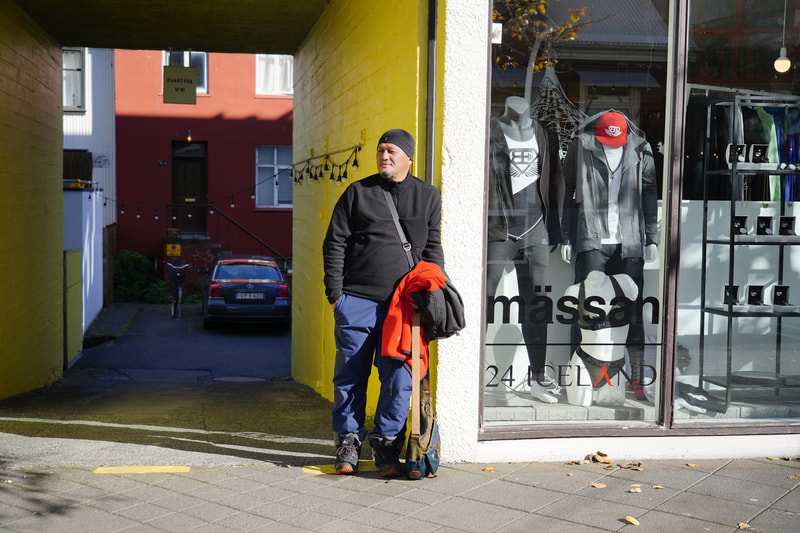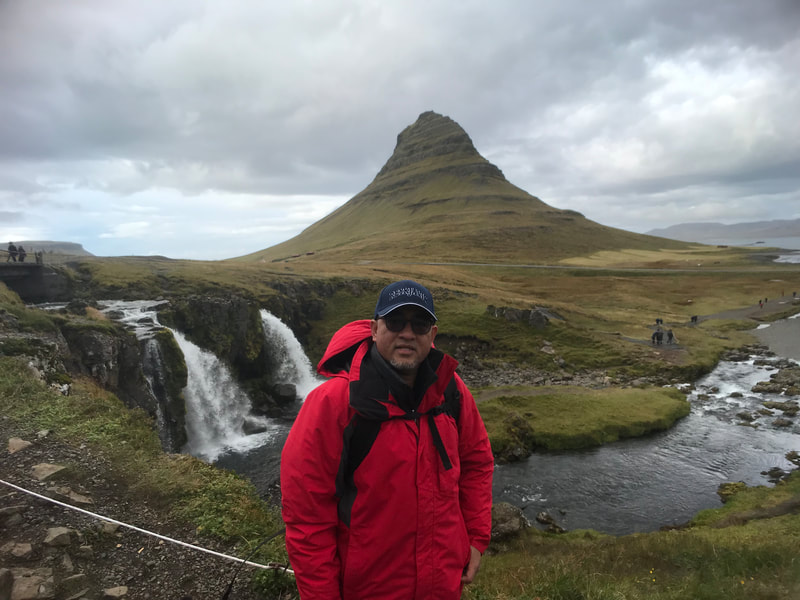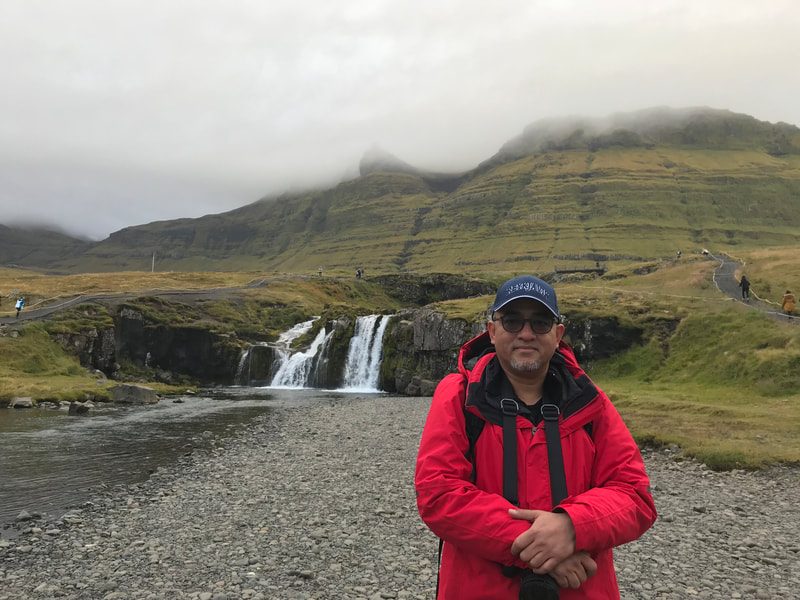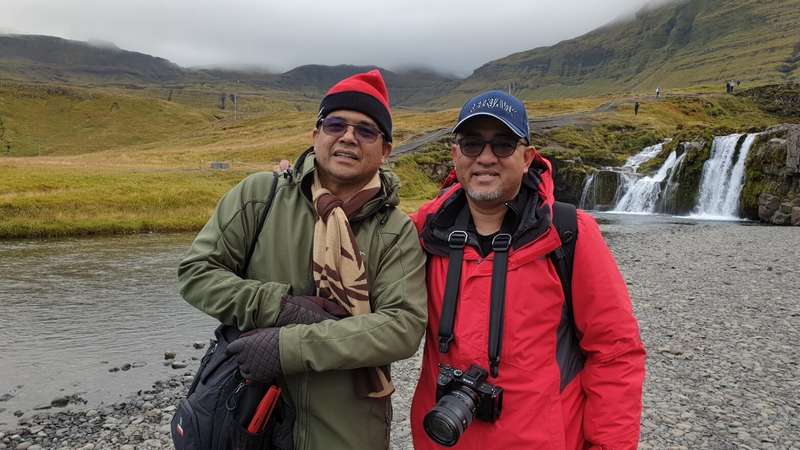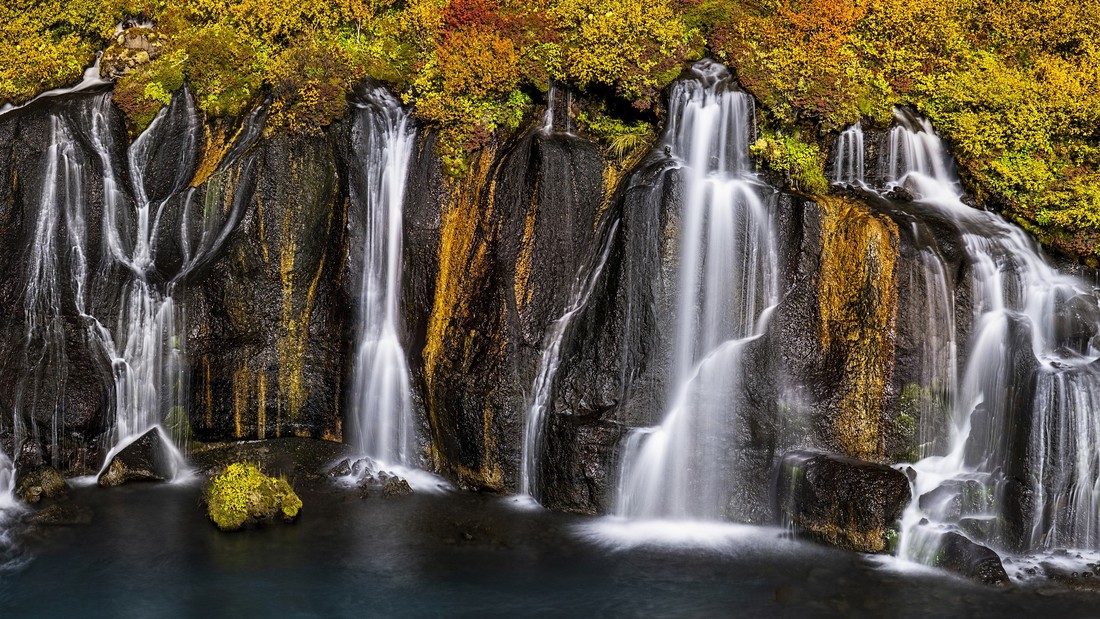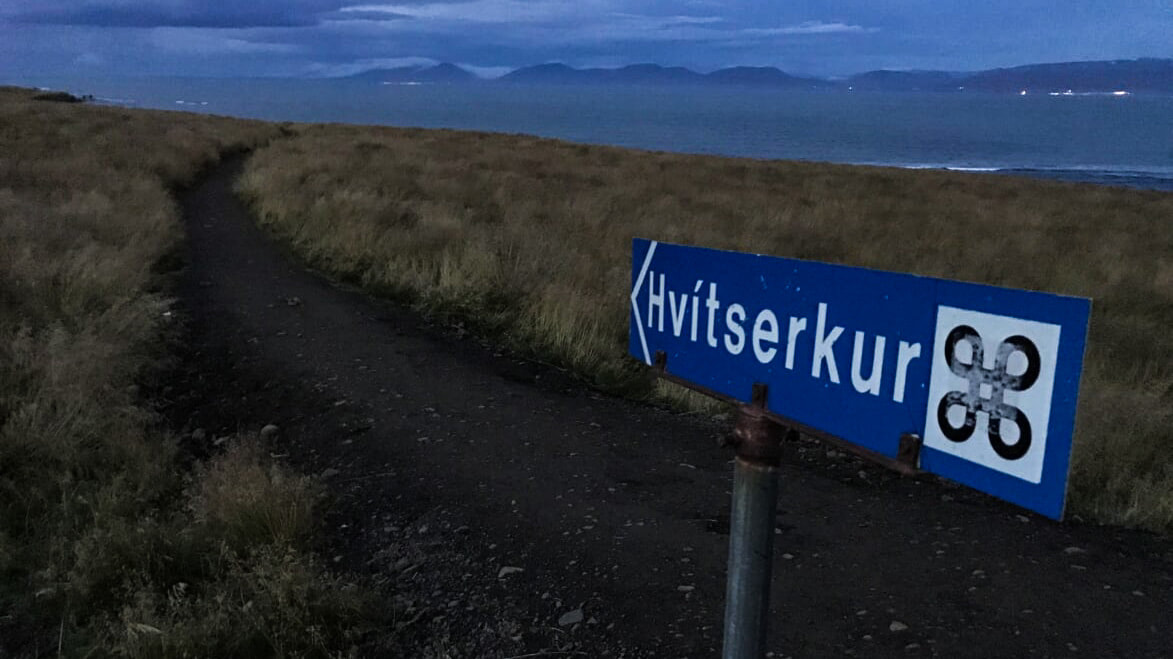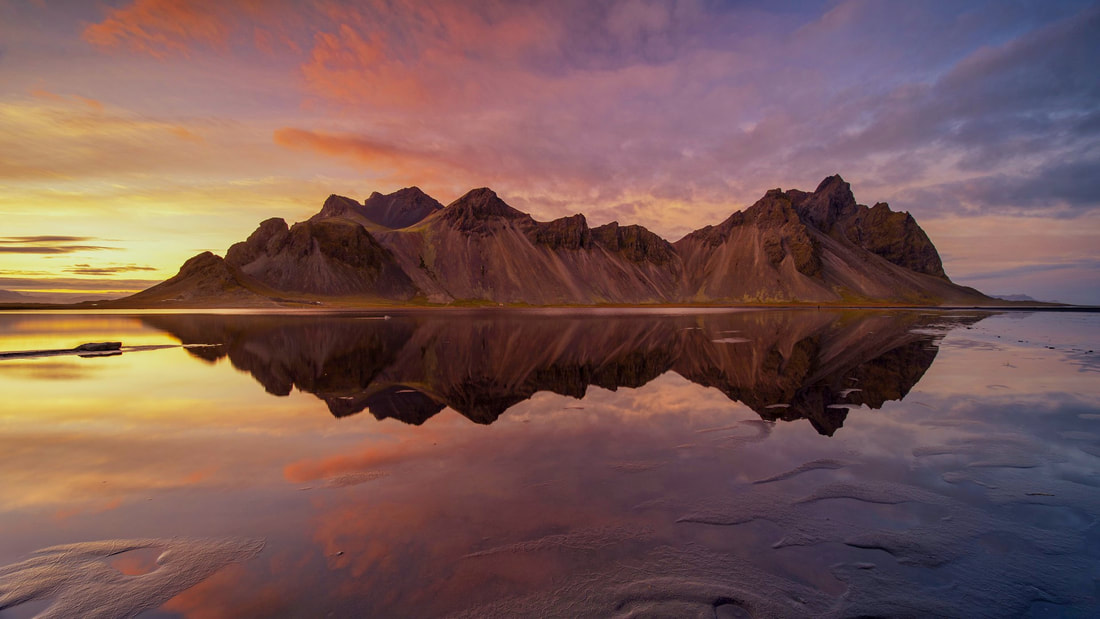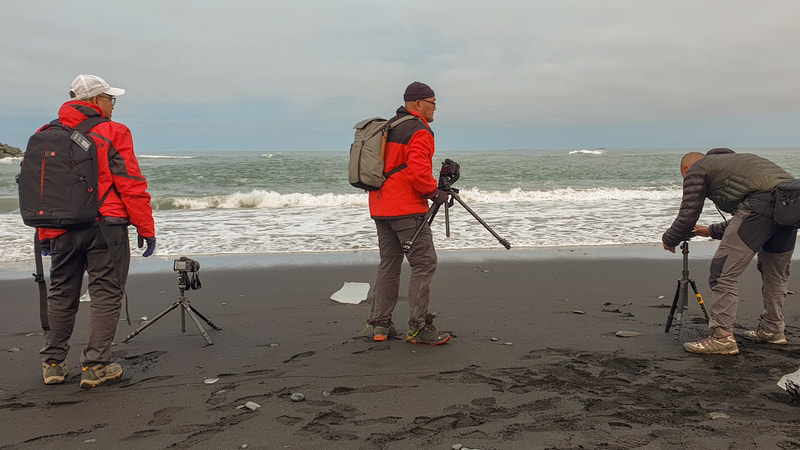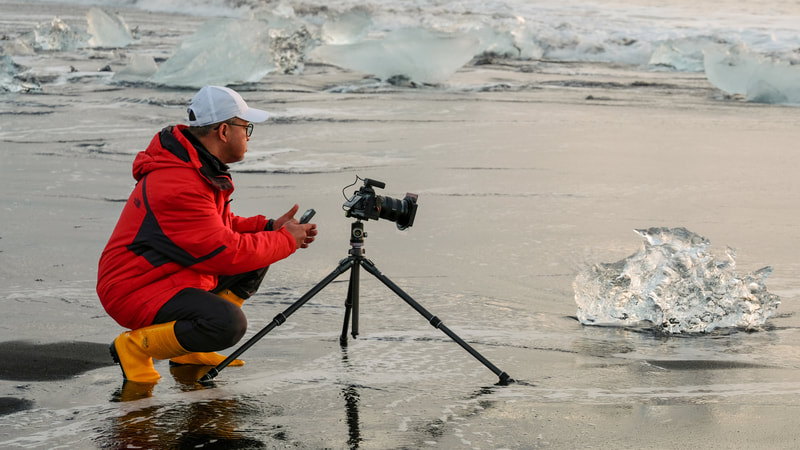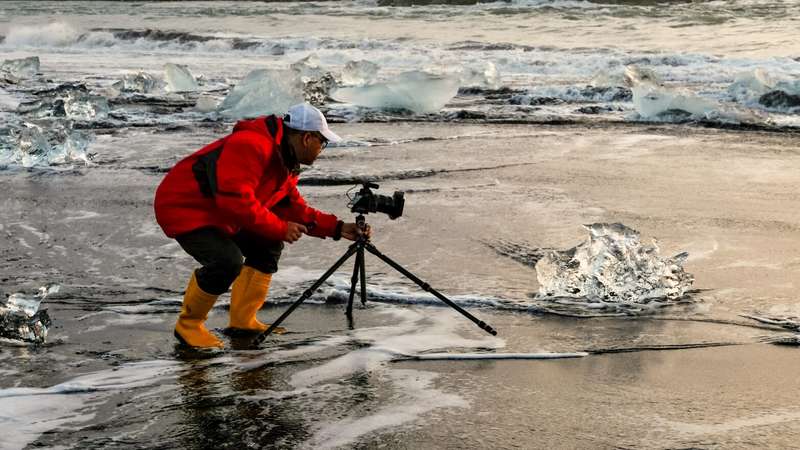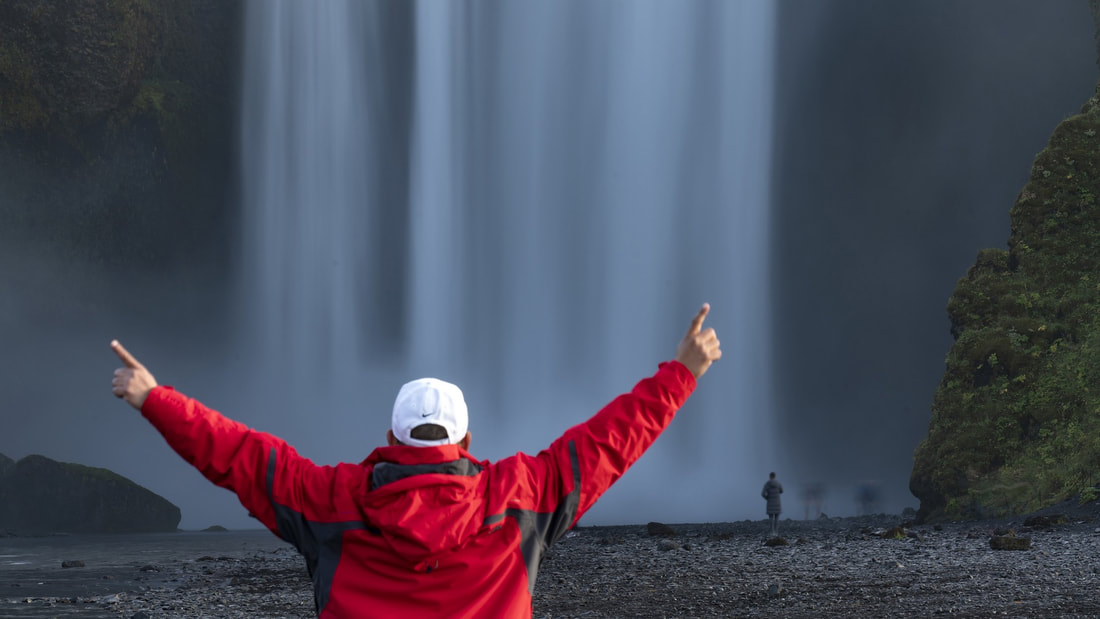|
We arrived back in Reykjavik on 18.09.2018 at night, after spending 10 days on the road trip. We spent the whole day on 19.09.2018 for Reykjavik city sightseeing and some last minute shopping for souvenirs. Most of the shopping was done along Laugavegur, the shopping street in the heart of Reykjavik. Among the landmarks that we visited were the Sun Voyager and Harpa Concert Hall. Sun Voyager (Sólfar) is a sculpture by Jón Gunnar Árnason, located next to the Sæbraut road in Reykjavík, Iceland. Sun Voyager is described as a dreamboat, or an ode to the sun. The artist intended it to convey the promise of undiscovered territory, a dream of hope, progress and freedom. Harpa is a concert hall and conference centre in Reykjavík, Iceland. The opening concert was held on 4.5.2011. The building features a distinctive colored glass facade inspired by the basalt landscape of Iceland. Sólfar, the Sun Voyager at sunrise. Harpa Concert Hall during blue hour sunset. Here are some of the images at both Reykjavik landmarks. The following are some the images taken while touring Reykjavik on foot. All the images were shot handheld with the α7RIII and SEL24105G or the SEL1635GM lenses. We took the earliest flight with WOW Air from Keflavik International Airport to Charles de Gaulle Airport in Paris for our last stopover of the trip.
Kveðja, Ísland!!! #SONY #SONYMalaysia #GMaster #NiSi #Leofoto #LeePhoto #IcelandPhotographyAdventure2018
0 Comments
Kirkjufellsfoss waterfall is situated in Kirkjufellsa river and located near the proud mount Kirkjufell by Grundarfjordur town at the northern side of Snaefellsnes peninsula in West Iceland. The mountain of Kirkjufell Iceland is the icon of the Snaefellsnes Peninsula. And with its waterfall Kirkjufellsfoss, it attracts nature lovers and photographers. We were at Kirkjufellsfoss on 17.09.2018 and 18.09.2018. Unfortunately, the weather was not on our side as there were intermittent rain throughout our stay at Grundarfjörður. We stayed in a hostel, about 2.5km from Mount Kirkjufell. I used two setups here. For still images, I used my SONY α7RIII with the SONY FE 16-35mm f/2.8 GM lens, mounted on my Gitzo Mountaineer GT-1542 and FLM 32FP ballhead. I used NiSi CPL, NiSi GND .9 Soft and Nisi ND8 filters to capture these shots. My other setup was mainly for timelapse, where I used SONY α7SII and Laowa 12mm f/2.8 Zero-D with NiSi CPL, mounted on the Leofoto LS-284C and Leofoto LH-30 ballhead. The various angles to photograph Mount Kirkjufell and Kirkjufellsfoss:
#SONY #SONYMalaysia #GMaster #NiSi #Leofoto #LeePhoto #IcelandPhotographyAdventure2018
Hraunfossar waterfall near Husafell in west Iceland, is a series of waterfalls formed by rivulets streaming over a distance of about 900 metres out of the Hallmundarhraun, a lava field which flowed from an eruption of one of the volcanoes lying under the glacier Langjökull. The waterfalls pour into the Hvítá river, downstream from Gullfoss waterfall, from ledges of less porous rock in the lava. We were at Hraunfossar on the last day of the road trip on 18.09.2018, enroute to Reykjavik. I used only my SONY α7RIII and SONY FE 16-35mm f/2.8 GM lens, mounted on my Gitzo Mountaineer GT-1542 and FLM 32FP ballhead, for the still shots. I used NiSi CPL, NiSi GND .9 Soft and Nisi ND8 filters to capture these shots. No timelapse this time around. After getting some still shots, I proceeded to fly my dji Mavic Pro Platinum for some awesome aerial view of the waterfall. Here is a slideshow of some the images captured at Hraunfossar. In my opinion, Hraunfossar is best shot in autumn for its colorfulness. It strikes as a contrast to the blueish water of the river. There is a big platform for visitors to photographs the "main waterfall" at Hraunfossar. I didn't go to the neighbouring Barnafoss since it was bit of a hassle to get to and I like the views of Hraunfossar much better. What to note:
#SONY #SONYMalaysia #GMaster #NiSi #Leofoto #LeePhoto #IcelandPhotographyAdventure2018
Hvítserkur is a 15m high basalt stack along the eastern shore of the Vatnsnes peninsula, in northwest Iceland. The rock has two holes at the base, which give it the appearance of a dragon who is drinking. The base of the stack has been reinforced with concrete to protect its foundations from the sea. We were at Hvítserkur on 16.09.2018 and we had to put up a night in a nice little town of Blönduós, because it is quite a distance to travel to the next location, the Snæfellsnes Peninsula. Legend has it that the rock is indeed a troll that was turned to stone by the rays of the sun. And speaking of sun, the midnight sun in midsummer is particularly nice for photographing the monolith, as well as photographing it it by sunset and sunrise. We've had glimpse of the Northern Lights (Aurora Borealis) that night, dancing their quiet and colourful dance across the arctic north facing sky. Vatnsnes itself is a mountainous peninsula, adding further to the scenery and seals may be found in the area, Hindisvik and Osar being two good places to seek them out and nearby, at the town Hvammstangi is a seal center, well worth visiting. Also on Vatnsnes and highly recommended is a natural fortress basalt columns natural called Borgarvirki, with further opportunities for great photos. I only had one setup, my α7RIII and my SEL1635GM lens, with NiSi CPL, NiSi ND8 and NiSi GND .9 Soft filters. Photography Tips:
#SONY #SONYMalaysia #GMaster #NiSi #Leofoto #LeePhoto #IcelandPhotographyAdventure2018
Hverir is a geothermal area with at the foothill of Namafjall, not far from Lake Myvatn. Located at the foot of the Namafjall volcanic mountain, the geothermal area displays fumaroles, large mud pools, steam vents and a bare orangy-red landscapes. We arrived here on 15.09.2018 straight from Akureyri where we stayed. Lake Mývatn Geothermal Area where the Jarðböðin, Myvatn Naturebaths is located. Opened on the 30th of June 2004, Myvatn Naturebaths offers something for everyone. Despite its northerly location, the region enjoys a temperate climate, and the long summer days when darkness never comes can be surprisingly warm. As summer merges into autumn, the landscape becomes a panoramic patchwork dotted with shades of gold and brown, while winter brings its own tapestry of snow, sparkling frosts, and frequent opportunities to enjoy the unforgettable splendor of the Northern Lights. There's no public toilets here, so, best to do your business at the nearby fuel station or at the nearby Jarðböðin, Myvatn's Nature Bath, before coming to this place. #SONY #SONYMalaysia #GMaster #NiSi #Leofoto #LeePhoto #IcelandPhotographyAdventure2018
The Goðafoss is a waterfall in Northeast Iceland. It is located in the Bárðardalur district of Northeastern Region at the beginning of the Sprengisandur highland road. The water of the river Skjálfandafljót falls from a height of 12 metres over a width of 30 metres. We arrived at Goðafoss on 14.09.2018 and 15.09.2018 and we stayed both nights in a hostel in the heart of Akureyri. The Goðafoss Waterfall got its name during year 999 or 1000 when Christianity was declared the official religion of Iceland. After that the local Lawspeker threw his statues of the Norse pagan gods into the waterfall. Hence the ‘Waterfall of Gods’. I used two setups here. For still images, I used my SONY α7RIII and SONY FE 16-35mm f/2.8 GM lens, mounted on my Gitzo Mountaineer GT-1542 and FLM 32FP ballhead. I used NiSi CPL, NiSi GND .9 Soft and Nisi ND8 filters to capture these shots. My other setup was mainly for timelapse, where I used SONY α7SII and Laowa 12mm f/2.8 Zero-D with NiSi CPL, mounted on the Leofoto LS-284C and Leofoto LH-30 ballhead. After coming across countless waterfalls in this Land of Fire and Ice, I must say that Goðafoss is the most beautiful of all, with endless shooting opportunities. Here is a slideshow showing the images that was captured at the waterfall: Some tips while admiring and photographing the Goðafoss Waterfall:
#SONY #SONYMalaysia #GMaster #NiSi #Leofoto #LeePhoto #IcelandPhotographyAdventure2018
Vestrahorn Iceland , located on the Stokksnes peninsula, is one of the most photographed mountains in Iceland. This majestic mountain is located close to the town of Höfn in East Iceland. From Höfn, continue back onto Route 1 (Thorvegur) and follow it for about 10 km or so before you come to a right turn to Stokksnes (an old radar base from what I understand). The road turns into a gravel road with a few narrow spots. Follow the road till you reach an intersection where you can find a cafe in the corner called the Viking Cafe. You have to pay a fee of 850kr. to enter and you can use the ticket twice to go in and out of the area. Follow this road toward the radar base and to the left is your photographic playground. We were at Vestrahorn on 12.09.2018 and we spent two nights in the city of Höfn, an Icelandic fishing town in the southeastern part of the country. It lies near Hornafjörður fjord. The town, the second largest in the southeastern part of Iceland, offers scenic views of Vatnajökull. Black sand beaches are common in Iceland and are primarily the result of volcanic rock being ground down to fine particles. The dunes though are quite unique to this location and make it a fascinating spot. The location is quite spectacular but it can be interestingly very hard to frame a good composition. The hard part is finding a good dune to use in the foreground but to also not spoil the scene by trampling across the sand. You can also head down to the beach side and shoot lovely reflection photographs. The following slideshow are some of the images captured at Vestrahorn, from afternoon till about midnight. Vestrahorn is a 454 metre tall scree mountain, mainly made up of gabbro and granophyre rocks. The Stokksnes peninsula on its west side locks in seawater by the land, so it's possible to get some great shots of the mountain mirrored in the calm seawater, that's almost like a big lagoon, but varies in size with the tide. I used my SONY α7RIII and SONY FE 16-35mm f/2.8 GM lens, mounted on my Gitzo Mountaineer GT-1542 and FLM 32FP ballhead. I used NiSi CPL, NiSi GND .9 Soft and Nisi ND8 filters to capture these shots. Here are some photography tips of the Vestrahorn mountain:
Participants to the Iceland Photography Adventure 2018. From L to R: Yours truly, Shaari Mat Saod, Othman Abdullah, Sheikh Izham Sheikh Razak, Abdul Rahman "Arman" Haron and Izzuddin Hanur Harith. #SONY #SONYMalaysia #GMaster #NiSi #Leofoto #LeePhoto #IcelandPhotographyAdventure2018
The Diamond Beach is a strip of black sand belonging to the greater Breiðamerkursandur glacial plain, located by Jökulsárlón glacier lagoon on the South Coast of Iceland. We arrived here on the early morning of 12.09.2018, our third day in Iceland during the Iceland Photography Adventure 2018. This location is directly after shooting the faint aurora borealis at Jökulsárlón glacier lagoon. The experience of shooting at Diamond Beach is like no other in this world. This is the only place one could shoot the blocks of ice being washed ashore by the strong waves of the North Atlantic Ocean. The following slideshow depicts the several shots at the same location to show the awesomeness of the beach. I used two setups here. For still images, I used my SONY α7RIII and SONY FE 16-35mm f/2.8 GM lens, mounted on my Gitzo Mountaineer GT-1542 and FLM 32FP ballhead. I used NiSi CPL, NiSi GND .9 Soft and Nisi ND8 filters to capture these shots. My other setup was mainly for timelapse, where I used SONY α7SII and Laowa 12mm f/2.8 Zero-D with NiSi CPL, mounted on the Leofoto LS-284C and Leofoto LH-30 ballhead. To achieve the wave effect, the shutter speed is kept between 1/3 sec to 1/6 sec. When photographing these ice chunks on the beach, you must be aware of every sense! From where you’re physically standing, to where the strong tidal waters are approaching, you need to anticipate a rapid change at any moment by being fearless but not going beyond your safety comfort level. On top of all this, as you’re using your creative toolbox to see patterns in this ever-changing and erratic shoreline environment, one must keep one eye on their gear and one eye on nature at all times! Because of the strong waves here, it is a must that you be close to your camera, so that you can quickly grab the tripod if the waves pushing large ice blocks in your direction. To achieve this, you either need to have the knee-high gum boots (as seen in the comedy TV series "Phua Chu Kang"), or even better the chest-high waders. It was rather unfortunate for two of the participants who had the worse experience of having their main cameras hit by the raging waves and damages by the sea water. They were without the waterproof boots. #SONY #SONYMalaysia #GMaster #NiSi #Leofoto #LeePhoto #IcelandPhotographyAdventure2018
Skógafoss is a waterfall situated on the Skógá River in the south of Iceland at the cliffs of the former coastline. The Skógafoss is one of the biggest waterfalls in the country with a width of 15 metres (49 feet) and a drop of 60 m (200 ft). Due to the amount of spray the waterfall consistently produces, a single or double rainbow is normally visible on sunny days. According to legend, the first Viking settler in the area, Þrasi Þórólfsson, buried a treasure in a cave behind the waterfall. The legend continues that locals found the chest years later, but were only able to grasp the ring on the side of the chest before it disappeared again. The ring was allegedly given to the local church. The old church door ring is now in the Skógar museum. We arrived at Skógafoss on the morning of 11.09.2018, after putting up a night in Hella. I used my SONY α7RIII and SONY FE 16-35mm f/2.8 GM lens, mounted on my Gitzo Mountaineer GT-1542 and FLM 32FP ballhead. I used NiSi CPL, NiSi GND .9 Soft and Nisi ND8 filters to capture these shots. Allow some time to visit Kvernufoss, the less visited neighbour of Skógafoss. We didn't have the time to visit Kvernufoss during this trip. There are accommodations near Skógafoss but they are very expensive! #SONY #SONYMalaysia #NiSi #Leofoto #LeePhoto #IcelandPhotographyAdventure2018
Fjallsárlón is a glacial lagoon in Iceland, located on the southern end of Vatnajökull glacier. Fjallsárlón can be found off Iceland’s main Ring Road, 47 kilometres (29 miles) east of Skaftafell Nature Reserve. It's also located about 10km from Jökulsárlón. As the lagoon is much smaller, you have a better view of the whole Fjallsárlón lagoon and a much better view of the edge of the tongue where the icebergs fall into the water. This part of the glacier tongue is of the very photogenic and adds a perfect background to the lagoon. When you stop by the parking lot you need to walk a short path over the hill north from the parking lot to see the lagoon. I used my SONY α7RIII and SEL24105G lens handheld to capture these shots. I should have flown my drone here, over the luminous glacier in the background. #SONY #SONYMalaysia #NiSi #Leofoto #LeePhoto #IcelandPhotographyAdventure2018
|
AuthorThis is the photography journey of Nur Ismail Photography where all the experiences from this year onwards will be shared with the audience. In collaboration with NiSi Malaysia, Leofoto, SONY Malaysia and Skylum Software. Thanks for viewing! Archives
August 2022
Categories |








